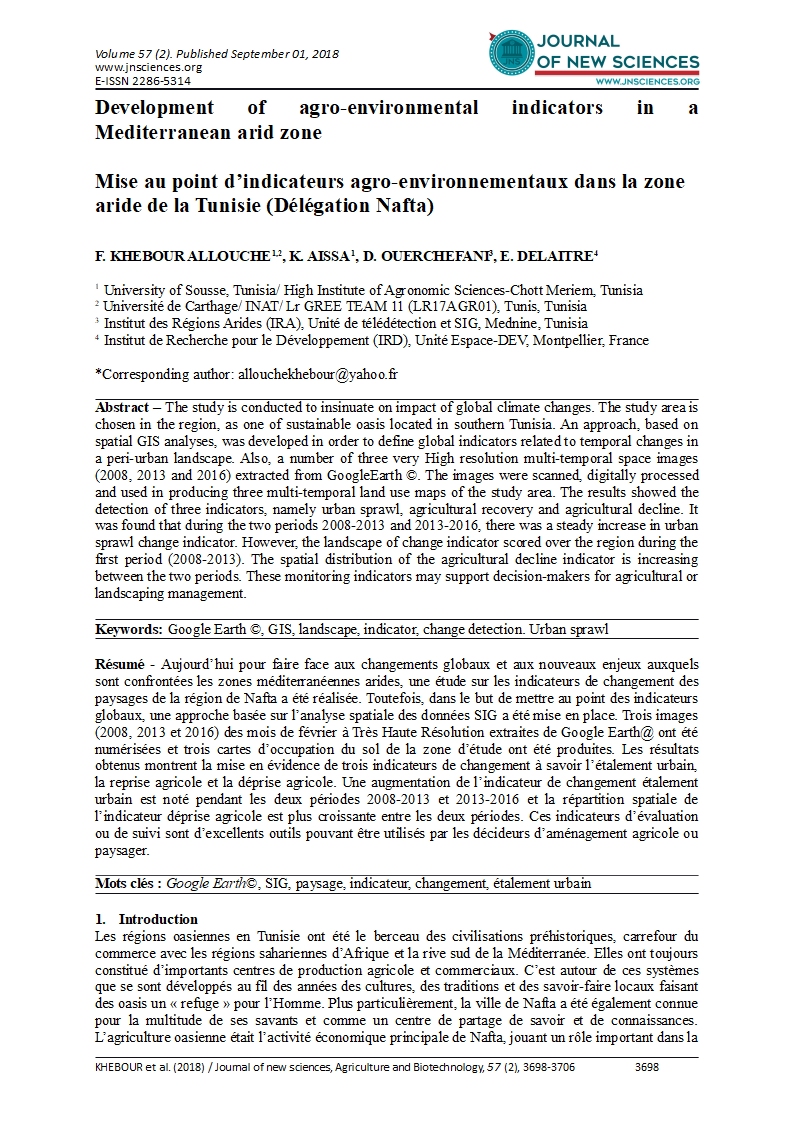- Category: Volume 57
- Hits: 4450
Sprouting, a bioprocess supporting food industry?

La germination, un bioprocédé au service de l’industrie agro-alimentaire ?
Bibliographic Review
S. JRIBI1
M. CHABBOUH1
K. SASSI2
D. SFAYHI3
S. MARZOUGUI4
H. AMARA2
H. DEBBABI1
1 National Institute of Agronomy of Tunisia (INAT) UR17AGR01 “Valorization of the Tunisian natural and agro-food heritage through innovation”, University of Carthage, 43 Avenue Charles Nicolle, 1082 Tunis, Tunisia
2 National Institute of Agronomy of Tunisia (INAT), Genetic and Plant Breeding Laboratory, University of Carthage, 43 Avenue Charles Nicolle, 1082 Tunis, Tunisie
3 National Institute of Agronomic research of Tunisia (INRAT) de la Recherche Agronomique de Tunisie, Rue Hédi Karray, 2049 Ariana, Tunisia
4 National Institute of Cereal Crops (INGC), 8170 Bou Salem, Tunisie
Abstract – Recent scientific researches proved a strong link between the diet adapted and the prevalence of some diseases (cardiovascular diseases, diabetes, obesity…). The use of functional products may contribute in solving this problem. Wheat is a cereal quite present in Mediterranean diet as it has an energetic and nutritional interest (proteins, carbohydrate, fibers, vitamins…). Consumers in occidental countries become more and more interested by mini-processed, without chemicals, natural, safe food products. Sprouts are in agreement with this trend. Sprouting is a physiological event where a complex nutrients transfer occurs. The aim of this review was to describe sprouting process and its impact on nutritional properties of wheat seeds. During germination, storage molecules (proteins, starch) are degraded under enzymatic action. Added to, some bioactive compounds such as polyphenols, vitamins… are newly synthesized. Altogether, contribute in improving wheat nutritional quality. Sprouting affects also functional and sensory properties of wheat. All modifications occurring during sprouting make sprouted wheat seeds a functional ingredient, naturally enhanced by bioactive molecules. Its use in food industry would provide an added value.
Keywords: Wheat, Sprouting, Functional ingredient, Bioactive compounds, Wheat Technology




